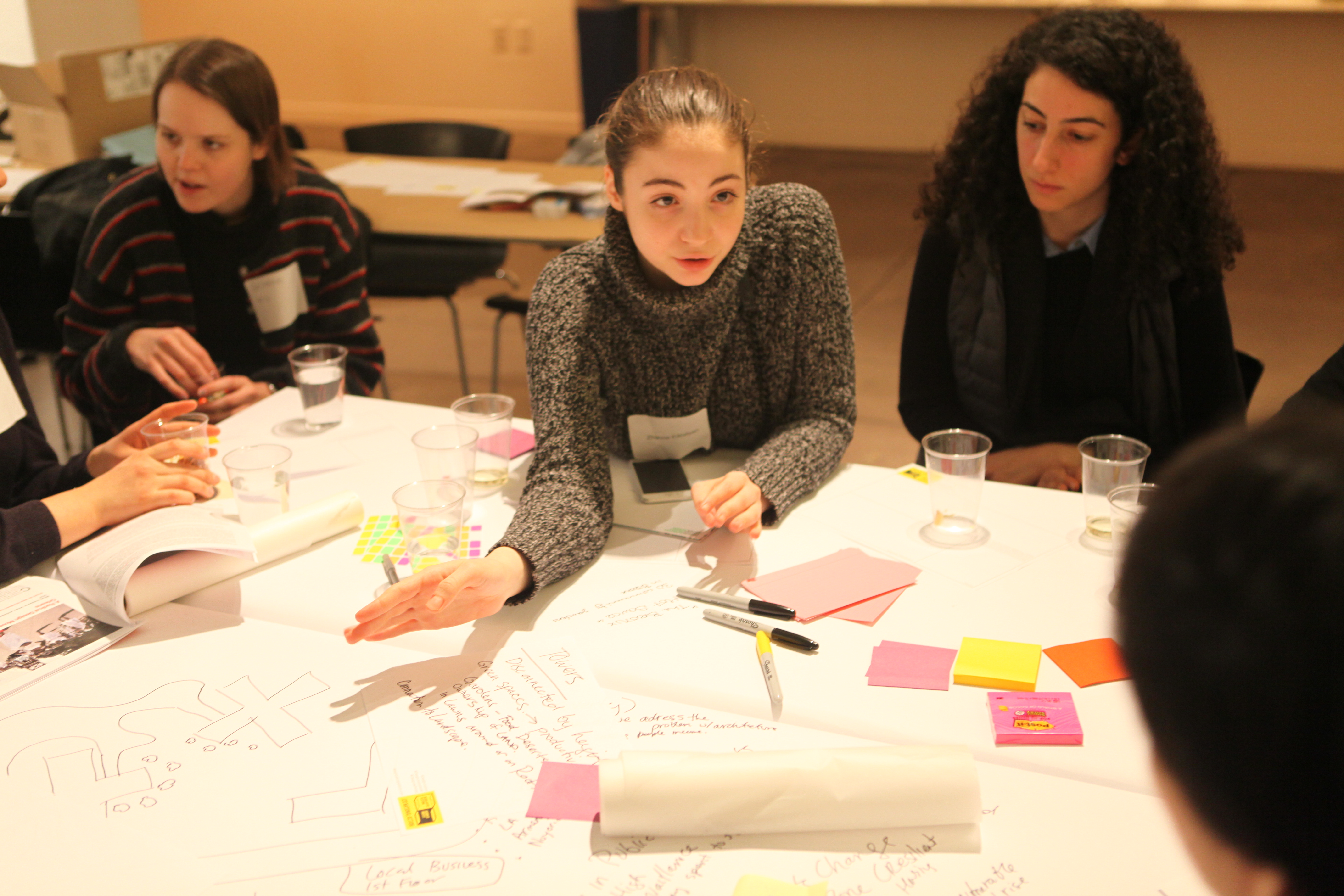by: Justin Pascone
On 01.20.16, the AIANY Diversity and Inclusion Committee hosted the Design as Protest NYC Cypher at the Center for Architecture. As part of a nationwide action on Inauguration Day, the charrette-style event connected activists, community organizers, architects, planners, designers, and artists advocating for social justice in the built environment. Similar workshops were hosted in cities around the country, including Detroit, New Orleans, Chicago, Seattle, Kansas City, Cleveland, and Oakland.
Envisioned as a sort of national brainstorming session for creative, place-based interventions that drive social change, the workshops were organized across academic, private, and public spheres with the goal of inspiring the design community to take a collective stand against injustice.
Bryan Lee, a New Orleans-based architect, coordinated the nationwide event and presided over projects in his home city. Lee, who has helped organize similar workshops in the past, stated, “the intention is that artists, community activists, designers, and community members are all in a room together thinking through what are the hopes and concerns that we believe we’re going to be facing in the next few years.”
At the New York cypher, attendees focused on new ways to use design in support of at-risk communities. Venesa Alicea, AIA, NOMA, LEED AP BD+C, Co-Chair of the AIANY Diversity and Inclusion Committee, led the workshop and guided groups through a series of core questions focusing on what social justice issues design could address, how people and communities are impacted, and how design could respond to these challenges.
Groups narrowed their work to four targeted areas: affordable housing and opportunities for local economic development on NYCHA campuses, including the integration urban agriculture; the impact of urban design and architecture on policing and the creation of safe spaces; creating better access to public libraries in communities throughout the city; and incorporating the Stone Wall Inn National Monument into a larger historical district that celebrates and communicates the advancement of LGBTQ civil rights.
Groups were encouraged to design something that either mitigates or eliminates the social injustice issue they addressed. Concepts from these nationwide cyphers will be compiled into a visual collection for activists, designers, and artists to use, and ultimately tackle, challenges faced during the new administration. It’s also the intention to implement some of the ideas as public space interventions in the form of billboards, posters, or yard signs around the country.
Pulse Points
- On 01.31.17, AIANY is hosting a National Design Services Act Info Session. The event will highlight one of AIA’s biggest federal policy initiatives, the National Design Services Act (NDSA), which would enable recent architecture graduates to work with non-profit community design centers in exchange for student debt relief. We’ll also discuss ways you can get involved with this issue and more at the local chapter. Current students and emerging professionals are encouraged to attend! To RSVP, continue here.
- On 01.17.17, Mayor de Blasio appointed Maria Torres-Springer the next Commissioner for the NYC Department of Housing Preservation and Development (HPD). James Patchett was named President And CEO of the NYC Economic Development Corporation (NYCEDC).
- On 01.17.17, Governor Cuomo released his 2017-2018 executive budget. Among the many initiatives, the budget proposal would expand the use of design-build to all state agencies, except those in New York City. With Mayor de Blasio’s support, a separate design-build bill for the city is expected be introduced into the state legislature in the coming weeks.
- On 01.24.17, Mayor de Blasio released an $84.67 billion budget for the coming fiscal year that made no specific plans for any threats posed to the city’s fiscal health by Donald Trump’s presidency and the Republican-controlled Congress. The budget proposal includes funds to add about 38,000 classroom seats, pave 1,300 miles of roadway, and add $400 million over six years to his Vision Zero plan to reduce traffic fatalities.








